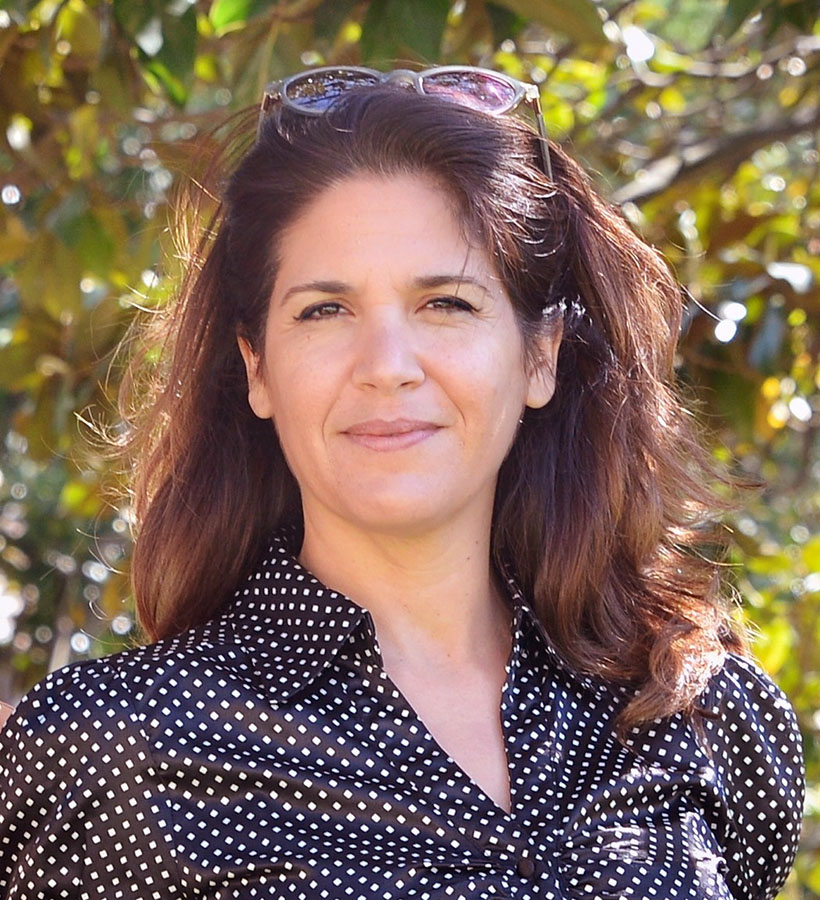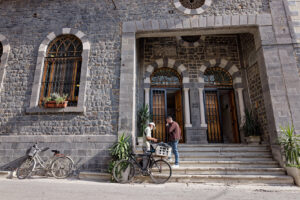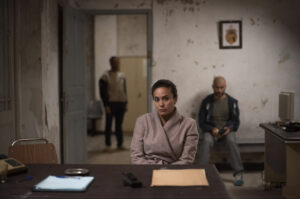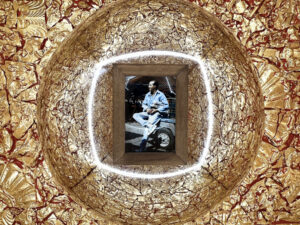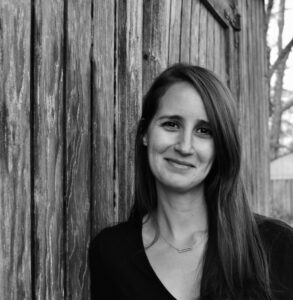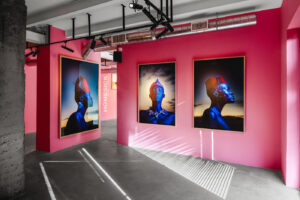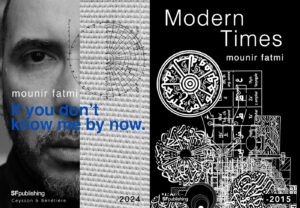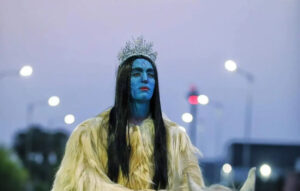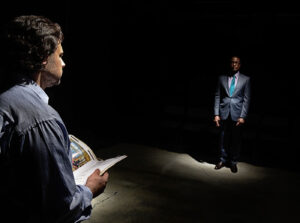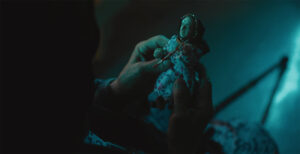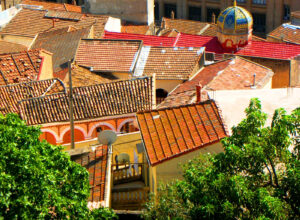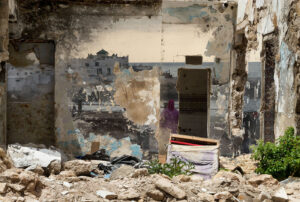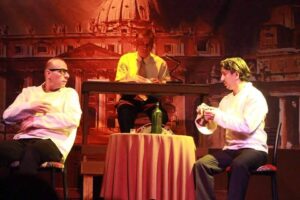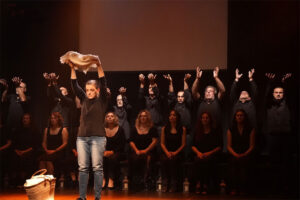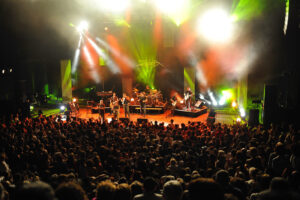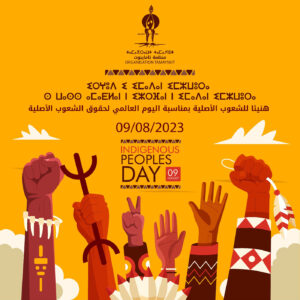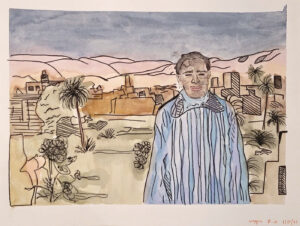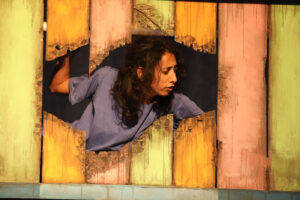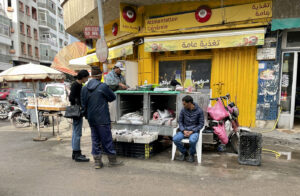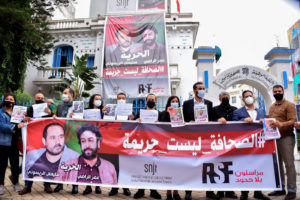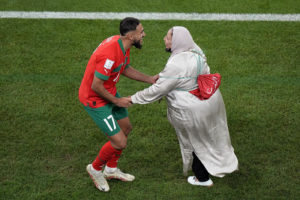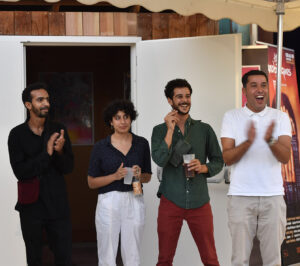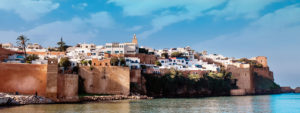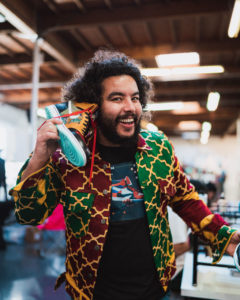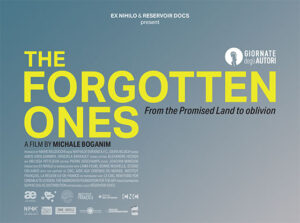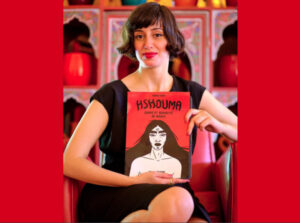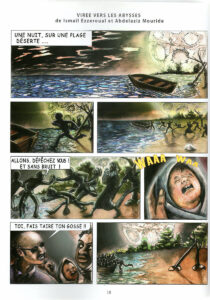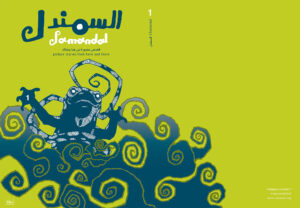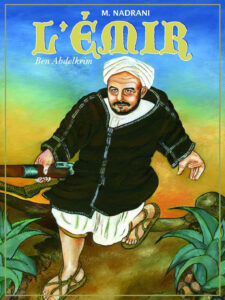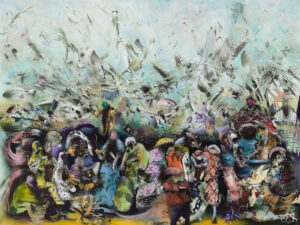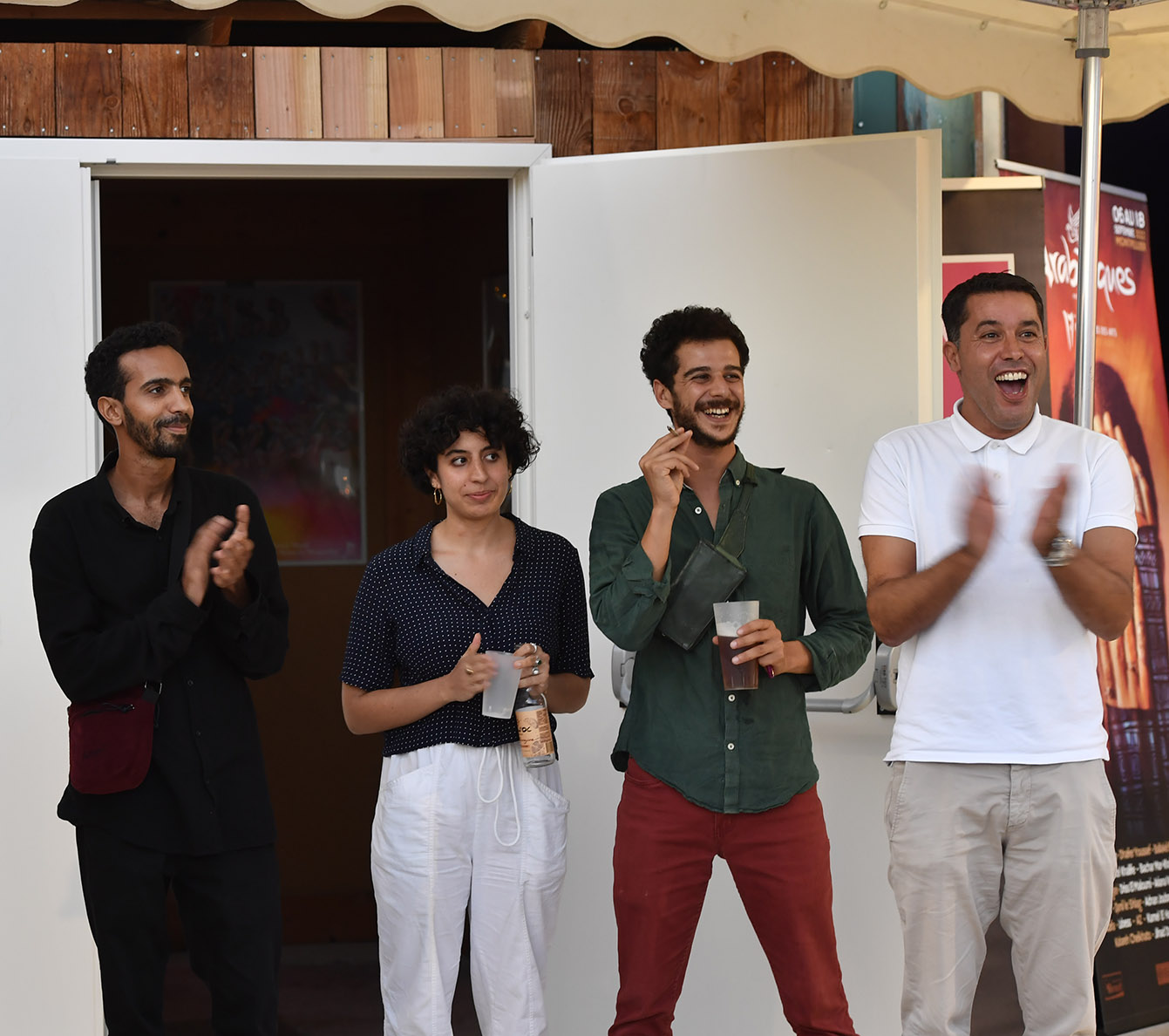
Europe’s largest Arab performing arts festival welcomes younger artists working in diverse media.
Nora Ounnas Leroy
Every year now, the Festival Arabesques brings a rich roster of performing and other artists to Montpellier, with a view to leading the dialogue of cultures between civilizations. One night, I ventured over to the Halle Tropisme, a large arts and entrepreneurial complex, to attend what the festival called an “incubator” between two cities, Casablanca (commonly known as “Casa”) and Montpellier. Here I met two young emerging Moroccan artists in the LEADART incubator, presented with the Arabesques Sound System. LEADART serves to develop artistic and cultural exchanges on the theme of urban arts — our two artists were invited for a week of artistic residency at the Halle Tropisme.
Jad Mouride is a 29-year-old digital artist who lives in Casablanca. After studying journalism and communications, he became a multimedia designer of image and sound, creating mapping for various shows and festivals, but also 3D animations and generative art visuals. He has also been a musician for ten years and hosts DJ sets accompanied by interactive projections with the collective KUSSUF (“eclipse”).
His “jack-of-all-trades” approach and the diversity of media he masters allow him to deal in an original and exhaustive way with subjects such as the human condition in relation to new technologies, surveillance, and taboos resulting from urban development.
He suggests that he is at the forefront of “the beginnings of a new art, combining the physical, the virtual and the hybrid that create the equation of the physical world.”
His work “Khazablanca,”for instance, takes its name from a play on words between “Casablanca” and “Khaza” which means “lichens” or “molds.” It is a co-creation with Salima Dhaibi, an actress who came up in the Casa theatre and performance art scene. “Khazablanca” offers “a subjective look at the brutality of human interactions,” Mouride says. “It is a city in constant construction/destruction. Casablanca is violent but also poetic. It illustrates the social oxymoron par excellence.”
Mouride explains that construction in Casablanca, in 1912, of the first large modern port in the Moroccan kingdom marked a decisive and historic turning point in the economic development of the country, but also in its societal structure. Thanks to national and foreign investments, Casa quickly became an industrial capital, creating in the wake of its growth as much success and joy as inequality and despair.
In his work, Mouride addresses issues such as the differences in population density. The bourgeois neighborhoods, once reserved for French settlers, are still those with the lowest population density.
“It is important to know that it was in Casablanca that the first shanty towns were created in the 1930s,” he explains, “increasing the gap between rich and poor, between those who have everything and large spaces to live and those who live on each other with little.”
His work also underlines the importance and the resurgence of magical rituals. The individual, having lost his bearings in an urban space designed essentially for work, seeks his balance, his deliverance.

Mohamed Amine Ait Hammou is a stage designer, director and video artist. He is 37 and lives in Tangiers. After attending the École des Beaux-Arts in Tetouan, he studied dramatic art and then enrolled in the École Supérieure des Arts Visuels of Marrakech. Today, he creates theater sets, video mapping and offers us, as part of LEADART, an interactive installation inspired by a popular money game in Moroccan fairs called Swirti.
It is a question of reaching, with coins, a cutout of Morocco floating above a world map. When you throw the coin, you write your dearest wish in a white book, arranged for this purpose. All these wishes, dreams and desires will then be published in The Book of Hope. This installation, as childish as it may seem, raises above all the question of public space. How to share, appropriate, or re-invent public space in a city where it is not allowed to be mentioned?
“My favorite themes are hope and disillusionment. Why do we leave our country instead of realizing our dreams at home? Why do we look elsewhere, and often far away, when we have everything under our feet?” Amine Ait Hammou wonders.
In the same vein of reflection, he has conducted workshops with the American Cultural Center or with professional Moroccan actors. In particular, he questions the ideal of beauty: “Why are we all dressed in Western fashion, rather than wearing our traditional clothes, which are much more practical and comfortable?”
He organizes a fashion show with clothes recovered from thrift stores. He stages the participants who improvise as models for the game, for the pleasure of reinventing themselves. Mohamed Amine Ait Hammou, in his creations, borrows from his almost childlike curiosity, of seeming naiveté, behind which there is a deep reflection and an immense tenderness towards his contemporaries.



